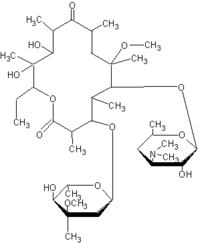'There are many prescription drugs that are reasonably safe when taken alone, but which can result in serious and sometimes fatal reactions when taken in combination with certain other drugs. An example is the non-sedating antihistamine terfenadine (Seldane). This drug interacts with the antifungal medication ketoconazole (Nizoral), leading to potentially serious cardiac arrhythmias. Similar interactions are known to occur between terfenadine and several other drugs, including itraconazole (Sporanox), erythromycin, and clarithromycin (Biaxin). A warning about these interactions has appeared in the Physicians' Desk Reference in bold type and capital letters, surrounded by a box. However, despite these clearly visible warnings, as well as an education campaign directed at the medical community, doctors continued to prescribe Seldane in combination with contraindicated drugs. The FDA eventually banned Seldane (which had been a $600-million-a-year drug), not because it was inherently dangerous, but because its in appropriate use made it dangerous.
Similar problems have occurred with cisapride (Propulsid), a drug approved by the FDA in 1993 for the treatment of nocturnal heartburn. By 1995, approximately 5 million prescriptions per year were being filled for this drug. However, by that time, more than 50 cases of cardiac arrhythmias and 4 deaths had been reported in users of the drug. The FDA ruled that cisapride was contraindicated in certain circumstances: 1) in patients taking medications that interfere with cisapride metabolism (e.g., drugs that inhibit the cytochrome P450-3A4 enzymes), 2) in patients taking medications that prolong the QT interval on the electrocardiogram, and 3) in patients with diseases that predispose to certain cardiac arrhythmias. A black-box warning to this effect was placed in the Physicians' Desk Reference, and the manufacturer sent a letter to all doctors.
However, despite these warnings, there was only a minor reduction in contraindicated use of this drug. In a recent study published in JAMA, the appropriateness of cisapride use was assessed at two managed-care organizations and one state Medicaid program, both before and after the FDA instituted its educational campaign. The evaluation included more than 22,000 cisapride prescriptions during each period. In the year prior to the FDA's effort at educating doctors, cisapride use was contraindicated for 25%, 30%, and 60% of users at the three sites, respectively, with the worst results being seen in the Medicaid patients. In the year after the FDA attempted to educate the medical community, these numbers changed only slightly: to 24%, 28%, and 58%, respectively. Because doctors were continuing to risk patients' lives by prescribing cisapride inappropriately, the manufacturer recently was forced to remove the drug from the market.
These events are disturbing for several reasons. First, they serve to remind us that serious interactions can occur with commonly prescribed drugs. Second, they point out that the healthcare community is not on the ball when it comes to protecting the public from these interactions. Doctors are not doing a good job of reviewing their patients' medications and warning them of the possibility of interactions; and pharmacists are not making adequate use of their computer programs, which could easily flag potential interactions. Third, patients who could benefit from these drugs are now being deprived of them, because the health-care profession cannot be trusted to prescribe the drugs appropriately.
There are at least two possible explanations or excuses for this rather dismal state of affairs. First, physicians working in a managed-care or Medicaid setting, who are often seeing six or more patients per hour, may not have the time or incentive to do a thorough medication history and to look up all of the possible interactions. Second, pharmacists, who often receive as little as $2 to $3 from insurance companies for each prescription filled, may also lack the time or motivation to record all of the prescription drugs a person is taking, and then search for interactions via computer. However, explanations and excuses do not change the fact that patients are being put at risk by negligence. The FDA has stated that, if the health-care community does not improve its response to safety warnings, other drugs may need to be removed from the market, including drugs that are effective and safe when used as indicated.
There are no easy answers to this problem. Certainly, economic incentives need to be changed, so that physicians and pharmacists will not feel it is an imposition to spend whatever time is needed to protect their patients. In addition, increasing emphasis on lifestyle modifications and natural remedies would reduce the need for prescription drugs, thereby decreasing the number of adverse interactions. However, even some nutrients and herbs can interact with certain drugs, so emphasis on natural therapies does not eliminate the need for vigilance. Until the medical profession cleans up its act, patients will need to take a caveat emptor approach to their health care. In this information age, anyone can determine on their own, whether the various drugs, herbs, and nutrients they are consuming might interact with each other. Although obtaining the necessary information might require a good deal of time and effort, at the present time it seems like the only way to protect oneself from harm.
Alan R. Gaby, MD
References
Smalley W, et al. Contraindiented use of cisapride: impact of food and drug administration regulatory action. JAMA 2000;284:3036-3039.
Woosley RL. Drug labeling revisions -- guaranteed to fail? JAMA 2000;284:3047-3049.
COPYRIGHT 2001 The Townsend Letter Group
COPYRIGHT 2001 Gale Group



